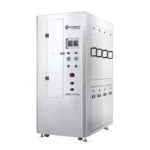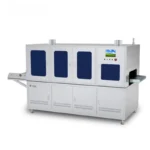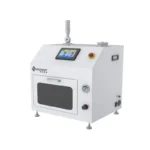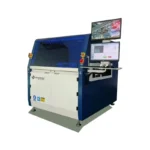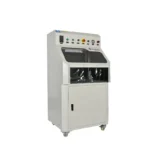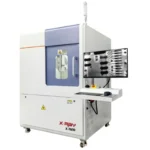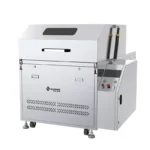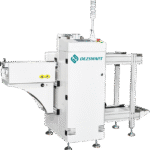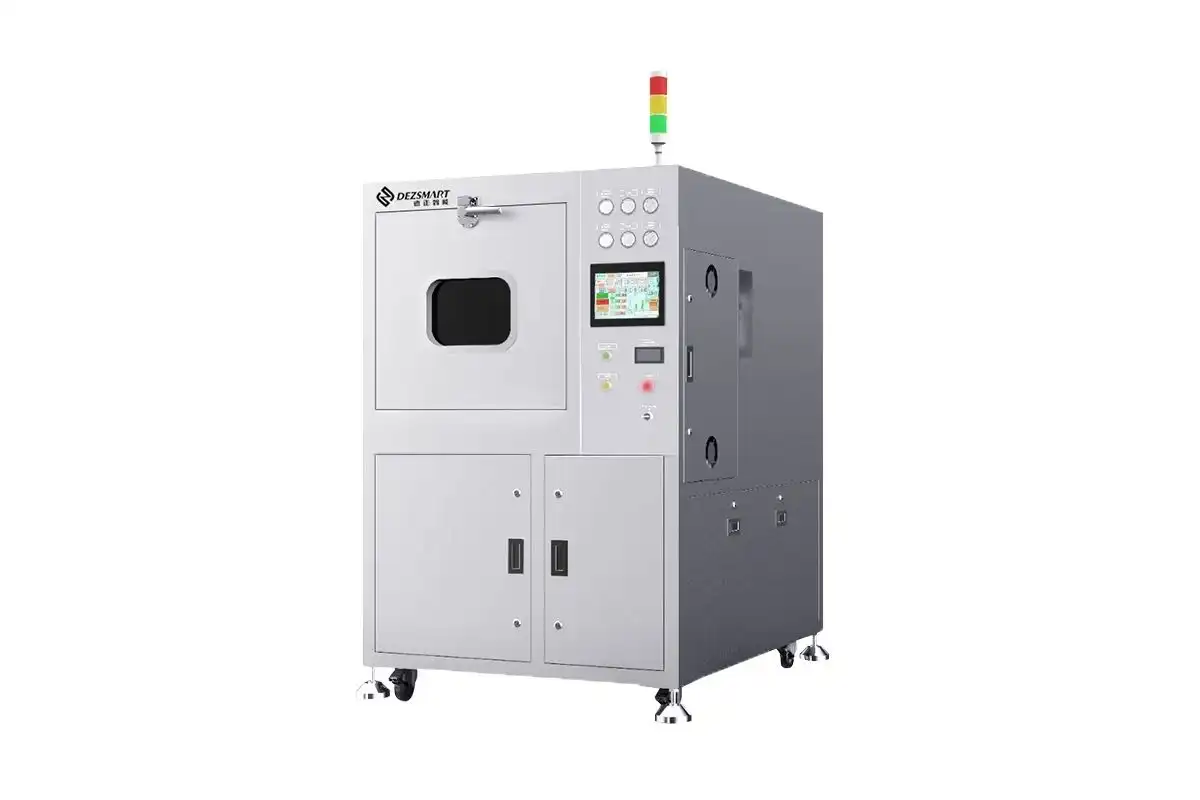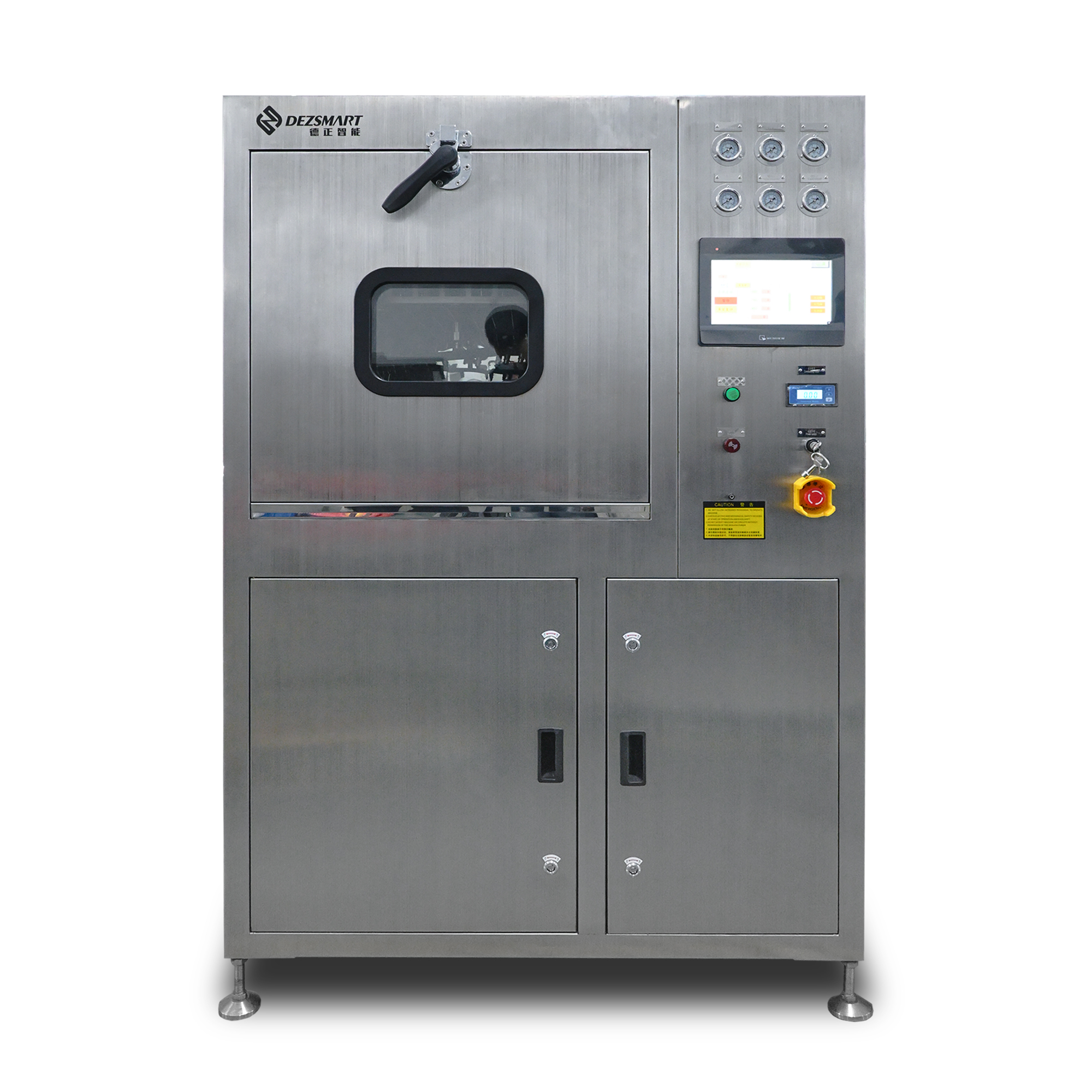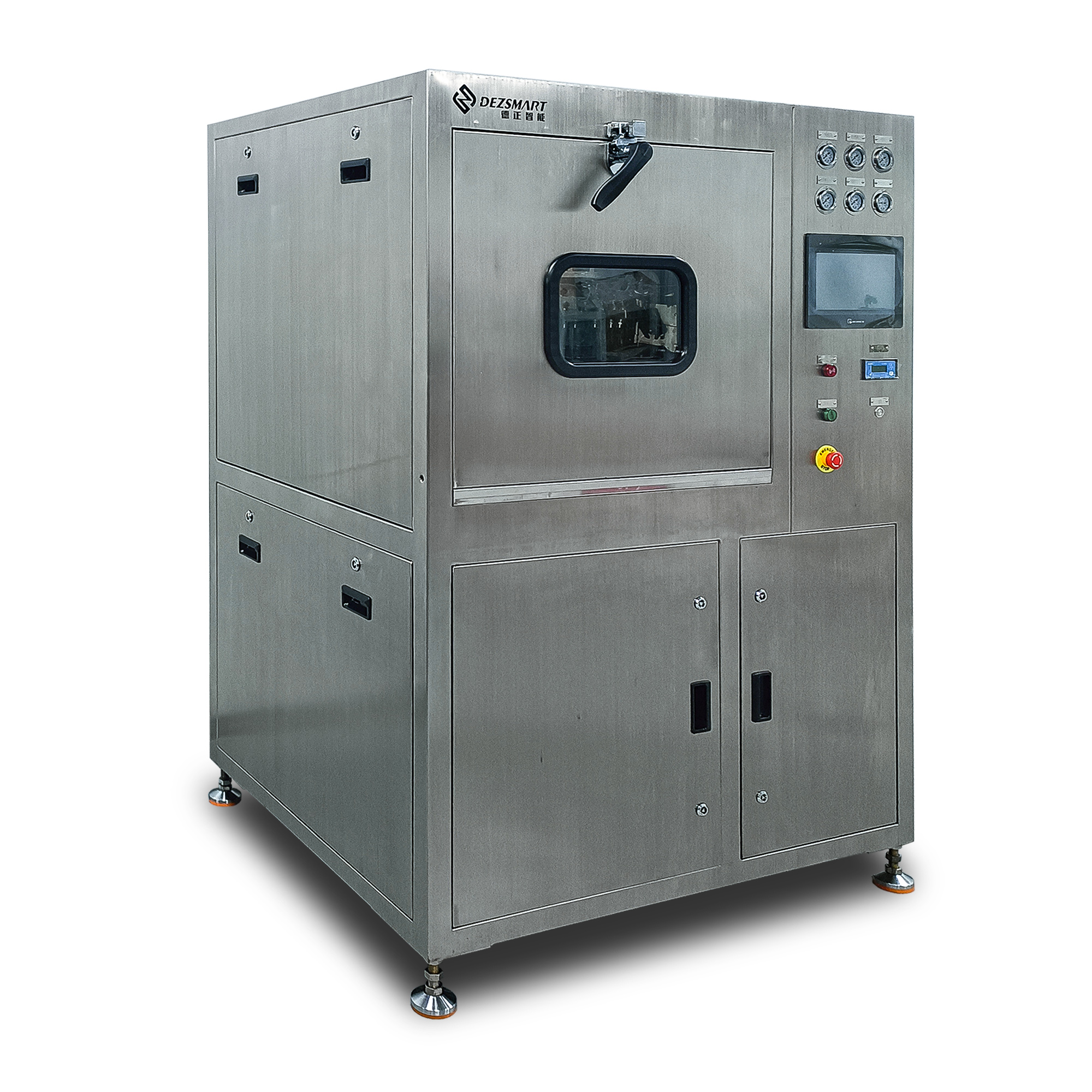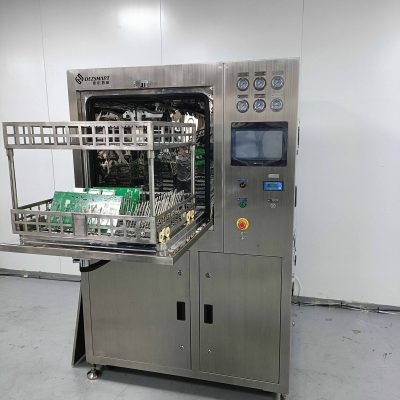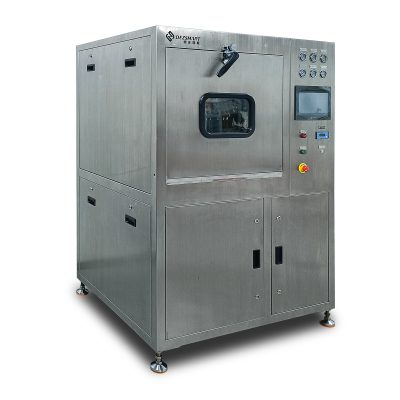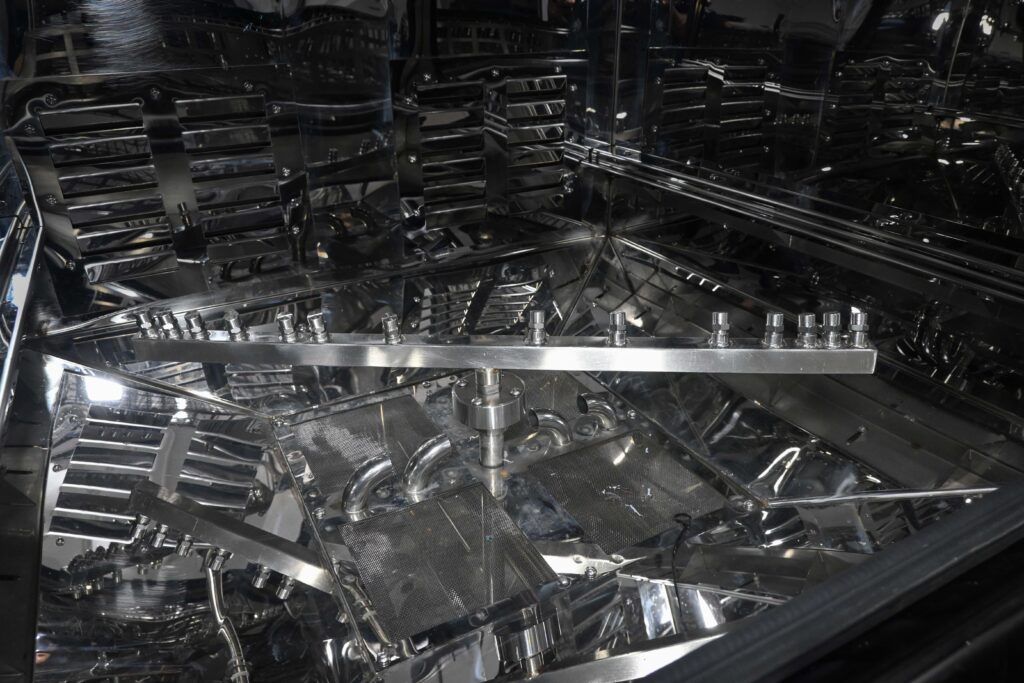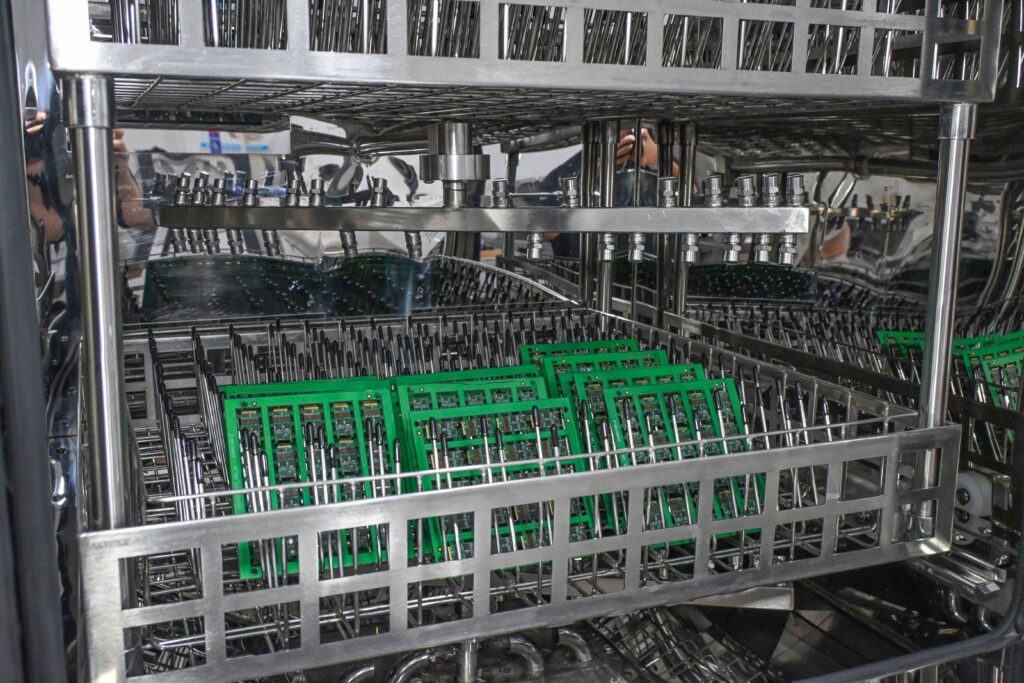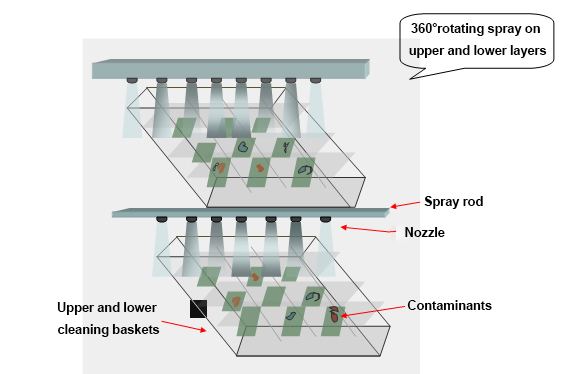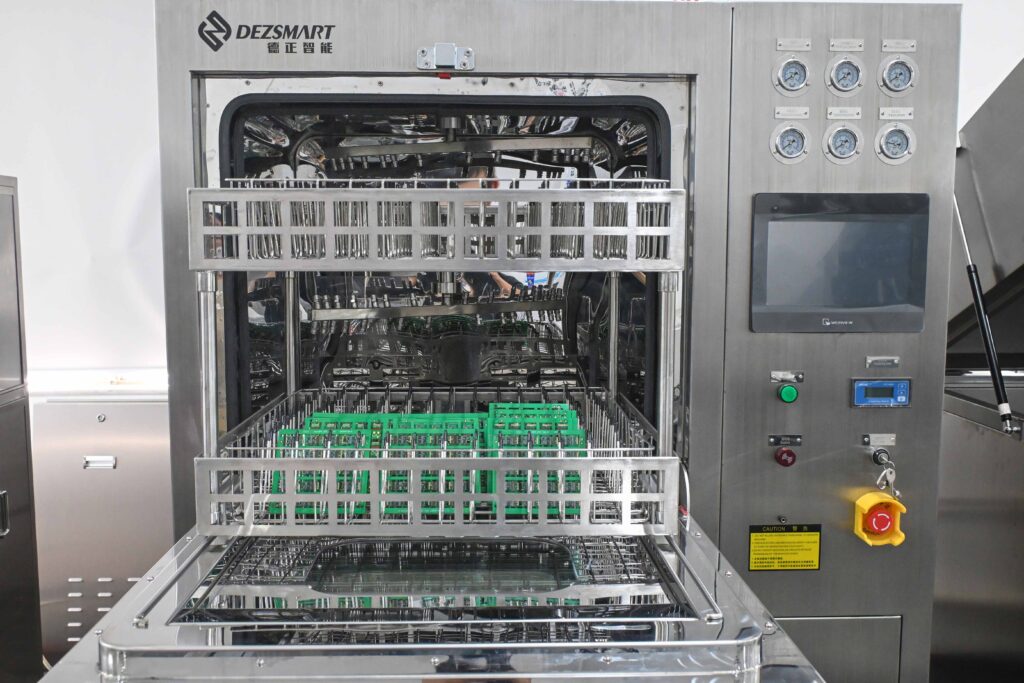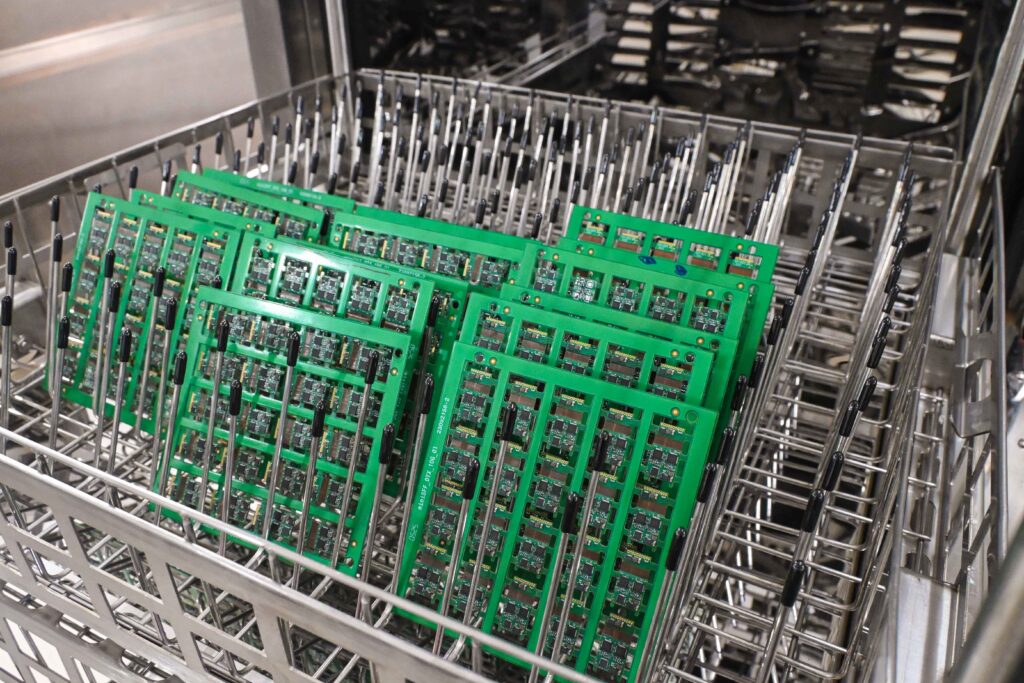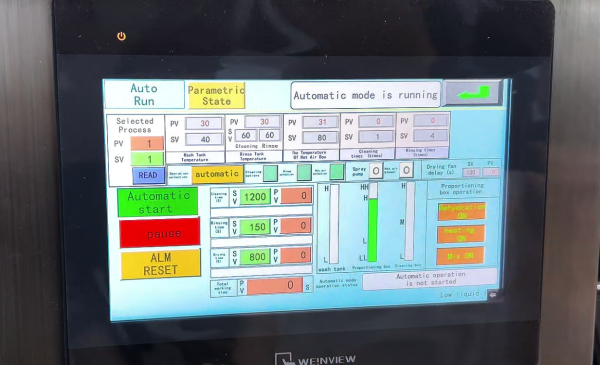1. نظرة عامة على المنتج
DEZ-C743 هو جهاز تنظيف متكامل قائم على الماء للوحات الدوائر المطبوعة (PCBA) من إنتاج DEZSMART. يتميز هذا الجهاز بكفاءة عالية في التنظيف على دفعات، وهو مصمم بالاعتماد على مفهوم TDC الأمريكي لعملية التنظيف عالية التدفق منخفضة الضغط وغير المتصلة بالإنترنت، مما يضمن معالجة متكاملة لعملية التنظيف والشطف والتجفيف بأكملها.
صُنعت جميع المعدات من الفولاذ المقاوم للصدأ 304، الذي يتميز بمقاومته للتآكل الكيميائي وعمره الافتراضي الطويل. كما أنها مزودة بنظام تحكم بشري PLC وشاشة لمس، وتتميز بسهولة وبساطة التشغيل. تكمن مزاياها الأساسية في كفاءة التنظيف العالية وانخفاض تكلفتها. صُممت لتلبية احتياجات تنظيف تدفقات PCBA الصغيرة والمتوسطة، ويمكن تعديلها بمرونة لتناسب مختلف أحجام الإنتاج - من خلال تعديل سعة التجويف وخزان المياه، مما يقلل استهلاك السوائل بشكل فعال ويلبي احتياجات تنظيف أنواع متعددة من PCBA. تُعد خيارًا تنافسيًا للغاية بين أجهزة التنظيف المنزلية غير المتصلة بالإنترنت.
2. نطاق التطبيق
تغطي قدرة التنظيف الخاصة بـ DEZ-C743 مجموعة متنوعة من البقايا الشائعة في عملية إنتاج PCBA، بما في ذلك:
- بقايا قابلة للذوبان في الماء، RMA (راتينج متوسط النشاط)، تدفق غير نظيف خالٍ من lead؛;
- ملح الطلاء الكهربائي، وحبيبات الأصابع، والغبار وكرات اللحام السائبة، وما إلى ذلك.
سواءً كانت لوحة دوائر مطبوعة صغيرة ودقيقة من إنتاج شركة تصنيع إلكترونيات أو لوحة دوائر كهربائية معقدة متوسطة الحجم، يُمكن استخدام هذه المعدات لتحقيق معالجة فعالة طالما كانت هناك حاجة لتنظيف البقايا المذكورة أعلاه. وهي مناسبة بشكل خاص لمصانع الإلكترونيات الصغيرة والمتوسطة، ومصانع تجميع لوحات الدوائر المطبوعة، وغيرها من الشركات التي تحتاج إلى مراعاة أنواع متعددة وسيناريوهات تنظيف دفعات صغيرة، ويمكنها تلبية متطلبات التنظيف الشاملة، بدءًا من عينات البحث والتطوير وصولًا إلى الإنتاج الضخم.
3. عملية العمل
تنقسم عملية تنظيف DEZ-C743 إلى خمس روابط رئيسية: التحميل، تنظيف المذيبات، غسل المذيبات، الشطف، والتجفيف. تتم العملية بأكملها في حجرة تنظيف واحدة دون الحاجة إلى نقل يدوي لقطع العمل. الخطوات المحددة هي كما يلي:
أ. مرحلة التحميل
تصميم رف المواد مزدوج الطبقات يدعم التحميل المتعدد الطبقات، ويسهل تشغيله مع رفوف التغذية بالدفع والسحب والأبواب والنوافذ القابلة للتركيب السريع. أقصى حجم تحميل هو 610 مم (الطول) × 560 مم (العرض) × 100 مم (الارتفاع)، ويمكن للدفعة الواحدة التعامل مع منتجات PCBA التي يقل وزنها عن 10 كجم.
ب. مرحلة تنظيف المذيبات
- إعادة التعبئة: ضخ الماء منزوع الأيونات (ماء DI) ومادة التنظيف الكيميائية في خزان التنظيف بنسبة محددة من 5%-25% (يدعم الإضافة اليدوية أو الخلط التلقائي)؛;
- عملية: بعد تسخين السائل المختلط إلى درجة الحرارة المحددة، يتم ضخه إلى خزان التنظيف بواسطة ضغط المضخة، ويتم رش PCBA بضغط منخفض وتدفق عالي بواسطة الفوهة؛;
- الصرف الصحي: بعد الانتهاء من عملية التنظيف، يتم تفريغ السائل الناتج عن طريق الأنبوب.
ج. مرحلة التنظيف والشطف بالمذيبات
- إعادة التعبئة: ضخ المياه النظيفة (أو المياه النقية) من خزان مياه خارجي؛;
- عملية: بعد أن تصل درجة حرارة الماء إلى القيمة المحددة، قم بضخها في أنبوب التنظيف لإجراء التنظيف الثانوي على المنتج لإزالة عامل التنظيف المتبقي؛;
- الصرف الصحي: يتم تفريغ السائل الناتج عن النفايات من خلال المضخة المساعدة للتأكد من عدم وجود أي بقايا كيميائية.
د. مرحلة التجفيف
يتم دفع الهواء الساخن الجاف إلى حجرة التنظيف من خلال الفلتر device، ويمكن أن تصل درجة الحرارة إلى 99 درجة مئوية (قابلة للتعديل)، مما يؤدي إلى تبخر الماء المتبقي بسرعة وتحقيق التجفيف الكامل لـ PCBA.
تدعم العملية بأكملها تخصيص المعلمات،, ويمكن تعديل وقت التنظيف والشطف والتجفيف في غضون 1-99 دقيقة للتكيف مع احتياجات التنظيف الخاصة بلوحات الدوائر المطبوعة ذات المواد المختلفة والبقايا المختلفة.
4. المزايا الأساسية
بالمقارنة مع معدات التنظيف المماثلة الموجودة في السوق، تنعكس المزايا التنافسية الأساسية لجهاز DEZ-C743 في الجوانب التالية:
أ. كفاءة عالية وتكلفة منخفضة
يستخدم جهاز DEZ-C743 عملية تنظيف منخفضة الضغط وعالية التدفق، إلى جانب تصميم فوهة علمي بتوزيع تدريجي من اليسار إلى اليمين وأنماط رأسية وأفقية متدرجة. هذا لا يُحسّن كفاءة التنظيف فحسب (باختصار أوقات التنظيف والشطف)، بل يُقلل أيضًا من استهلاك السوائل. كما يدعم إعادة تدوير سائل التنظيف في حلقة مغلقة، مما يُقلل بشكل أكبر من تكاليف الكواشف الكيميائية.
ب. تصميم صديق للبيئة وسهل الصيانة
تتميز الفوهة وذراع الرش بتصميم سريع التركيب، فلا يتطلبان أدوات متخصصة للتركيب أو الإزالة أو الصيانة. كما تتميز المعدات بنقاط وصول لمكونات مثل المراوح والمرشحات، مما يُحسّن كفاءة الصيانة اليومية بنسبة تزيد عن 50%. نظافة عالية وتوافق واسع.
ج. النظافة والتوافق الواسع
يتوافق التلوث الأيوني بعد التنظيف تمامًا مع معايير IPC-610D من الفئة الثالثة (≤1.56 ميكروغرام/سم²، ومتوافق مع معيار MIL-28809) والفئة الأولى، مُلبيًا بذلك المتطلبات الصارمة للمكونات الإلكترونية الدقيقة. يدعم تصميم الرف المزدوج الطبقات (610 مم × 560 مم × 100 مم) لوحات الدوائر المطبوعة كبيرة الحجم، ويستوعب مجموعة واسعة من المنتجات بسُمك يتراوح بين 0 و100 مم وأوزان تصل إلى 10 كجم.
د. العملية المتكاملة والتشغيل المرئي
تُجرى عمليات التنظيف والشطف والتجفيف في الحجرة نفسها، مما يُغني عن نقل العمليات ويُقلل من خطر التلوث الثانوي. تُتيح نافذة مرئية وإضاءة LED رؤية آنية لعملية التنظيف، مما يُسهّل تعديل المعلمات في الوقت المناسب.
هـ. التكيف المرن مع احتياجات الإنتاج
يمكن تعديل سعة الحجرة وخزان المياه لتلبية احتياجات العميل الإنتاجية. يدعم النظام الإضافة اليدوية أو الخلط التلقائي لمادة التنظيف والماء المُحلى بالديزل بنسبة متناسبة (5%-25%) لتلبية مختلف سيناريوهات التنظيف.
5. هيكلية المنتج
يركز التصميم الهيكلي لـ DEZ-C743 على المتانة والكفاءة وسهولة الصيانة، ويتضمن بشكل أساسي المكونات التالية:
أحد عملائنا من مصانع تجميع الإلكترونيات الصغيرة والمتوسطة الحجم ينتج بشكل أساسي لوحات الدوائر المطبوعة لمعدات الاتصالات. تستخدم هذه المنتجات مجموعة متنوعة من المواد اللزجة (lead-free، وnoclean، وRMA). نظرًا لكثرة الدفعات وتنوع أنواع المنتجات، يعاني التنظيف اليدوي التقليدي من انخفاض الكفاءة وزيادة الرواسب.
بعد تقديم آلة تنظيف PCBA DEZ-C743, ، حققت الشركة:
- تحسين كفاءة التنظيف: تم زيادة إنتاج الدفعات من 45 رقاقة/ساعة إلى 120 رقاقة/ساعة، مما يلغي الحاجة إلى النقل اليدوي؛;
- انخفاض التكاليف: انخفض استهلاك مواد التنظيف بمقدار 30%، واستهلاك المياه والكهرباء بمقدار 20%؛;
- تم استيفاء معايير الجودة: اجتازت جميع المنتجات اختبار IPC-610D الفئة الثالثة، وانخفض معدل شكاوى العملاء إلى الصفر.
بالإضافة إلى ذلك، فإن ذراع الرش السريع الاتصال للمعدات يتطلب ساعتين فقط من الصيانة الشهرية،, تحسين استمرارية الإنتاج بشكل أكبر.
تتميز آلة تنظيف لوحات الدوائر المطبوعة (PCBA) المائية غير المتصلة بالإنترنت DEZ-C743 بكفاءة عالية، وتكلفة منخفضة، وسهولة صيانة، ونظافة عالية. يُلبي تصميمها المتكامل للعملية وبنيتها المتوافقة مع معايير user احتياجات التنظيف المتنوعة لمصنعي الإلكترونيات الصغيرة والمتوسطة على نحو مثالي. سواءً كان الهدف تحسين جودة المنتج، أو خفض تكاليف الإنتاج، أو إدارة إنتاج مرن وعالي التنوع ودفعات صغيرة، فإنها تُعدّ حلاً تنظيفيًا موثوقًا به لتصنيع الإلكترونيات، مما يُعزز تنافسية الشركات في قطاع التصنيع الدقيق.
